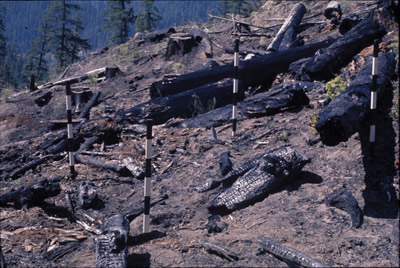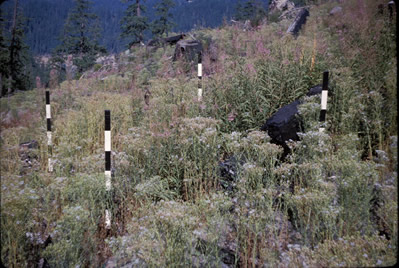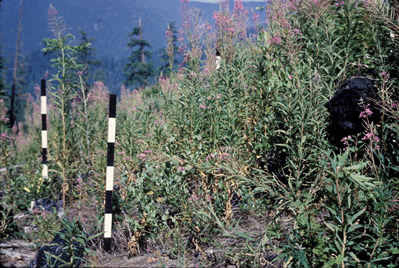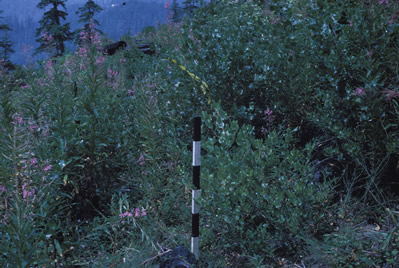| Long-Term Studies of Secondary Succession in Douglas-fir Forests of the Pacific Northwest |
|
Halpern,
C. B. 1988. Early successional pathways and the resistance
and resilience of forest communities. Ecology 69:1703-1715. (.pdf
file) Halpern,
C. B., and T. A. Spies. 1995. Plant species diversity in natural
and managed forests of the Pacific Northwest. Ecological Applications
5:914-934. |
|
A permanent vegetation plot illustrating rapid changes in species
composition during the first 5 yr of succession. Plots were established |
||
 |
 |
|
|
1
year after broadcast burning |
2
years after burning: dominated by Senecio sylvaticus |
|
 |
 |
|
| 3
yr after burning: dominated by Epilobium angustifolium |
5 years after burning: dominated by Epilobium angustifolium and Ceanothus velutinus (to the right) |
|